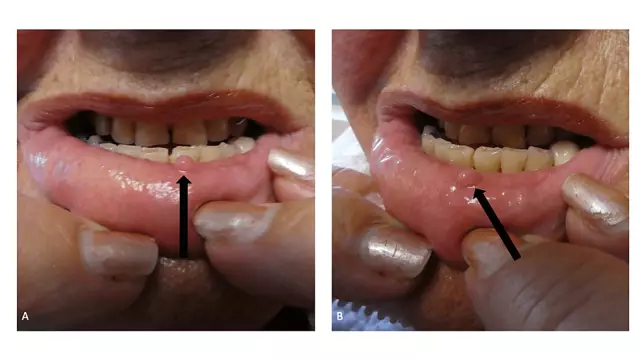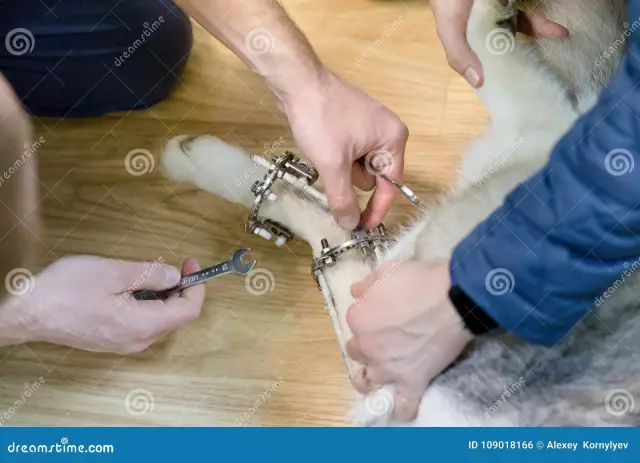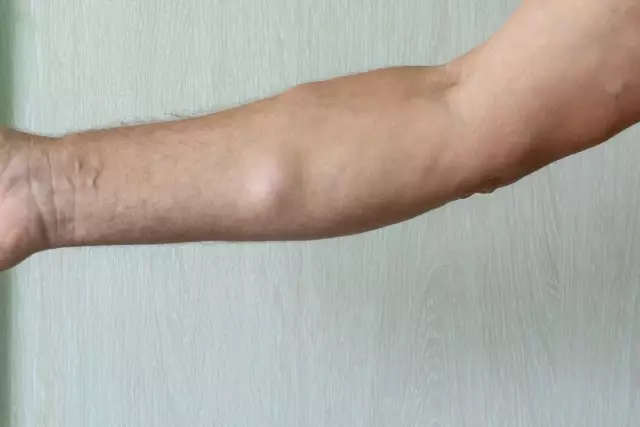- Author Rachel Wainwright [email protected].
- Public 2023-12-15 07:39.
- Last modified 2025-11-02 20:14.
Fibroma
Brief description of the disease

Fibroma is a tumor that consists of connective fibrous tissue. Typically, a fibroma is a benign, solid, dense, spherical or oval-shaped mass.
The tumor grows slowly, but it can reach very large sizes and is formed mainly in the subcutaneous tissue, on the skin and mucous membranes.
The causes of fibroids
Fibroma can appear due to gene mutations, trauma, as a hereditary disease, due to an increase in the amount of progesterone, estrogen, or the use of drugs that promote tissue growth.
Fibroma symptoms
Tumors form in different parts of the human body, and therefore their symptoms are different.
The most common and common in medical practice are fibroma of the uterus, breast, skin fibroma, plantar fibroma.
Fibroma of the uterus is painless in most cases, which is a serious obstacle to its timely detection. It is impossible to independently determine the appearance of a growth on the walls of the uterus, therefore, for many women, the first symptom and reason to undergo an examination is the appearance of uterine bleeding, prolonged menstruation, pain during intercourse, in the buttocks, back, lower back. There may also be a feeling of pressure on the bladder (more frequent urination) and in the pelvic region.
Skin fibroma is a tumor formation in the subcutaneous tissue and dermis. The formation is usually flesh-colored, sometimes soft and hard, sometimes attached to the leg.
Fibroma of the breast is a spherical lump on the chest that is not painful on palpation, but can cause a feeling of fullness in the chest during the premenstrual period.
Plantar swelling is painful and presents with pain when walking or standing for a long time.
Fibroma diagnostics
Fibroma is diagnosed in different ways.
To determine fibroids of the uterus and mammary gland, an examination by a gynecologist, mammologist, ultrasound examination is required.
To diagnose skin fibroids and other types of external tumors, it is enough to undergo a visual examination by a doctor.
Additionally, after removal of the fibroma, a histological or cytological examination of a tumor fragment is performed to exclude its malignancy and confirm the initial diagnosis.
Fibroma treatment
Treatment of uterine fibroids is carried out mainly by four methods:
- Surgical intervention, in which the fibroma or uterus is removed;
- Hysteroscopic myomectomy. Such removal of fibroids is carried out only in 20% of cases. With a hysteroscope, special instruments are inserted into the uterine cavity with which the tumor is removed;
- Embolization. With the help of a substance that is injected into the artery, the fibroma is separated from the blood supply, loses its nutrition and shrinks.
- Medication. Patients with a tumor that has not reached a large size are prescribed medications (non-steroids, hormones, birth control pills) that promote its resorption.

Treatment of fibroma that has arisen on the skin is carried out by removal - radio wave, laser and surgical removal.
Also, if the fibroma of the skin is small, it can be removed using the diathermocoagulation procedure or by burning with carbonic snow acid.
If there is a fibroma of the skin on the leg, it can be cut with scissors or tied with a thread (alternative method of treatment).
Other types of fibroids are treated mainly by its removal: laser, classical surgical method, radio wave method.
Prevention of fibroma
Prevention of fibroma is a healthy lifestyle, exclusion of increased trauma, the use of hormonal drugs (including contraceptives) only under the supervision of a doctor.
Since it is almost impossible to prevent the influence of hereditary factors and gene mutations, in order to avoid complications, one should not neglect routine examinations by a gynecologist, mammologist and examinations by general practitioners when suspicious formations on the skin appear.
YouTube video related to the article:
The information is generalized and provided for informational purposes only. At the first sign of illness, see your doctor. Self-medication is hazardous to health!






